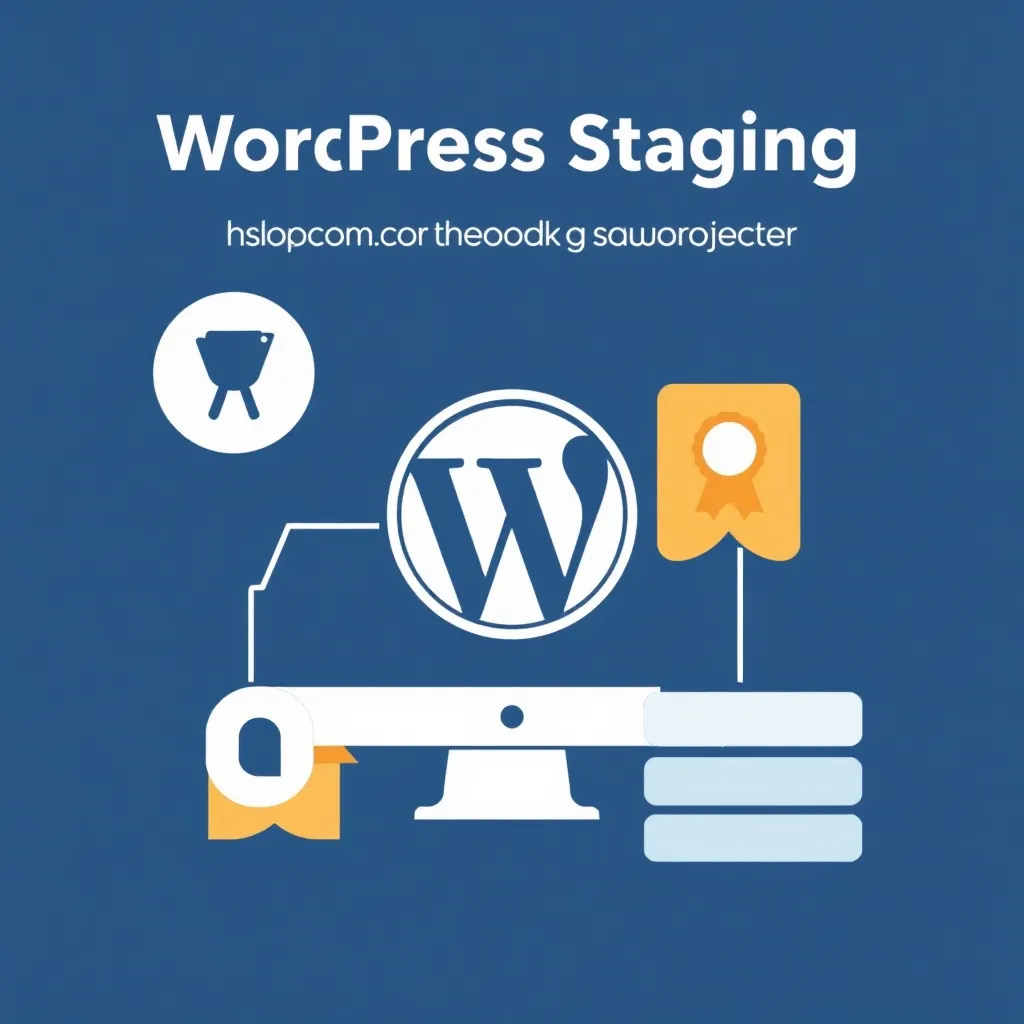A comparison of free CMS systems: WordPress, Joomla and Typo3 offer different advantages in terms of user-friendliness, scalability and security functions. The use of the right CMS systems not only determines the performance of a website, but also its maintainability, SEO potential and long-term flexibility.
Key points
- WordPress is ideal for small to medium-sized websites and is easy to use.
- Joomla offers flexibility for community projects and integrates advanced functions such as multilingualism.
- Typo3 is designed for large enterprise websites with high security and detailed rights management.
- Extensions play a central role in the adaptation of all three systems.
- Scalability should be noted - not every system grows effectively with the project.
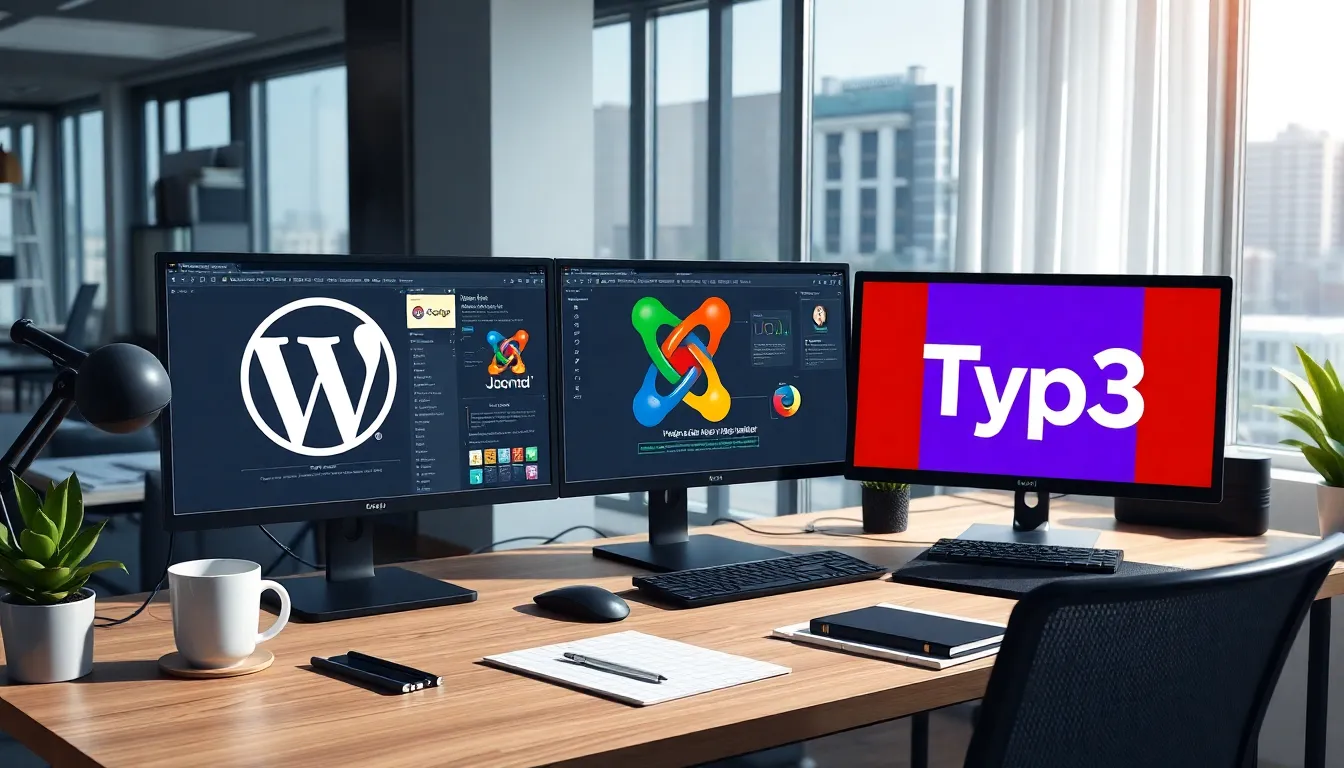
WordPress - Easy to get started and flexible to expand
WordPress is the world's leading CMS for good reason. Its simple setup and intuitive interface make it the first choice for beginners. Companies with a manageable site structure also benefit from the large selection of free and paid plugins. One click is all it takes to integrate new functions - from SEO tools to e-commerce extensions.
The diversity literally cries out for customized solutions. But this is exactly where risks lurk: Outdated plugins can lead to security vulnerabilities. That's why I always make sure to only use actively maintained extensions and to schedule regular updates.
Another advantage: the huge community. Regardless of the topic - help can usually be found quickly in the forum or in tutorial videos. For simple websites, I find WordPress to be a quick starting point with strategic potential.
In addition, WordPress is THE solution for many developers and freelancers to quickly create executable websites or set up prototypes. The fast deployment, the large number of hosting providers and the almost infinite number of themes make it possible to create a wide variety of industry websites. However, WordPress does not always grow organically if the project becomes very large. Careful planning of the data structure is required here to ensure that performance remains acceptable even with further growth. Especially with a very large product catalog or a complex blog network (multisite), it is worth taking a look at whether WordPress really forms the best basis - or whether a differently structured system is more suitable.
Joomla - Structured design meets flexibility
If you want to organize a little more content or add functions such as member portals, multilingual content or forums, you should take a look at Joomla. Personally, I find Joomla convincing when it comes to more structured websites with many content categories. The CMS has integrated user groups, article categories and modules - which simplifies the creation of structured content.
The user interface is somewhat more technical than WordPress. On the other hand, you get functions right from the start that have to be integrated via extensions in other systems. The native multi-language support is particularly successful - without additional modules.
One disadvantage is the smaller number of extensions and templates compared to WordPress. Sometimes it takes a while to find the right plugin that runs stably and meets your requirements. Nevertheless, Joomla remains a reliable tool for more demanding, but still medium-sized sites.
I often see Joomla as a solid solution for associations, non-profit organizations or websites with a community focus. You can organize member and user rights very well and use an integrated forum, blogs or calendars, for example. Although the learning curve is higher than with WordPress, the clearly structured content types mean that even larger sites remain manageable. Another advantage is the longer-term release cycles and the stable updates: Joomla relies on continuous further development, which allows projects to "hold out" for a long time without having to install updates every two weeks.
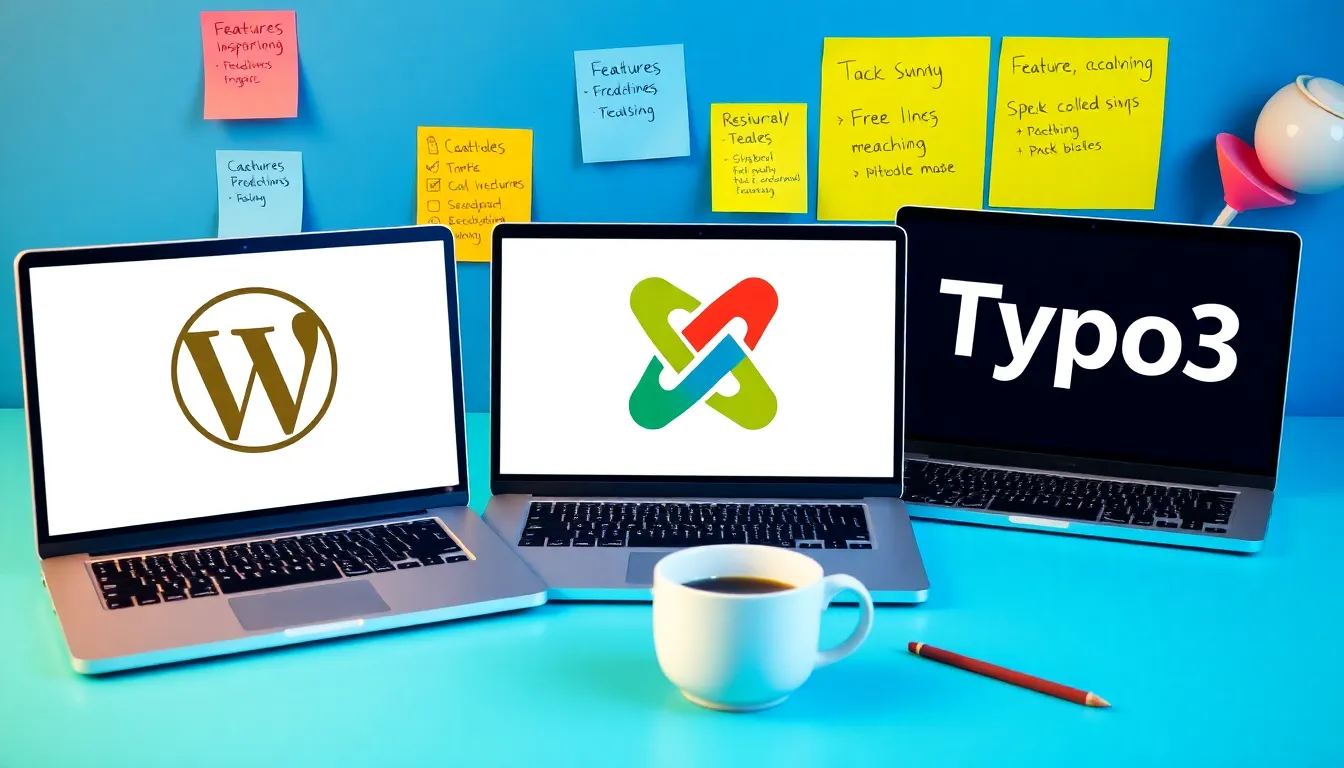
Typo3 - The professional solution for large projects
Typo3 is intended for websites that have many pages, user groups and individual business logics. Personally, I use Typo3 when it comes to highly scalable platforms and integrative systems - connected to intranets, CRM interfaces or complex workflows, for example.
It takes time to set up, but the possibilities are impressive. A granularly configurable rights and role model ensures that even large teams are assigned precise roles. The CMS allows a very clear separation of backend workflow and frontend output.
Anyone using Typo3 should have technical background knowledge or rely on professional developers. On the other hand, the system is stable, secure and can be expanded almost indefinitely in the long term - with extensions or your own modules.
Typo3 is also commonplace in many companies, as internal IT requirements can be integrated relatively easily. Whether it's single sign-on solutions or complex permissions - Typo3 can be adapted very granularly. In my experience, the system is particularly worthwhile if you are aiming for a kind of "digital experience platform" to integrate not only content, but also applications or databases. The stability is a major advantage: once Typo3 has been configured correctly, it can be used for years without having to fundamentally switch to a new system.
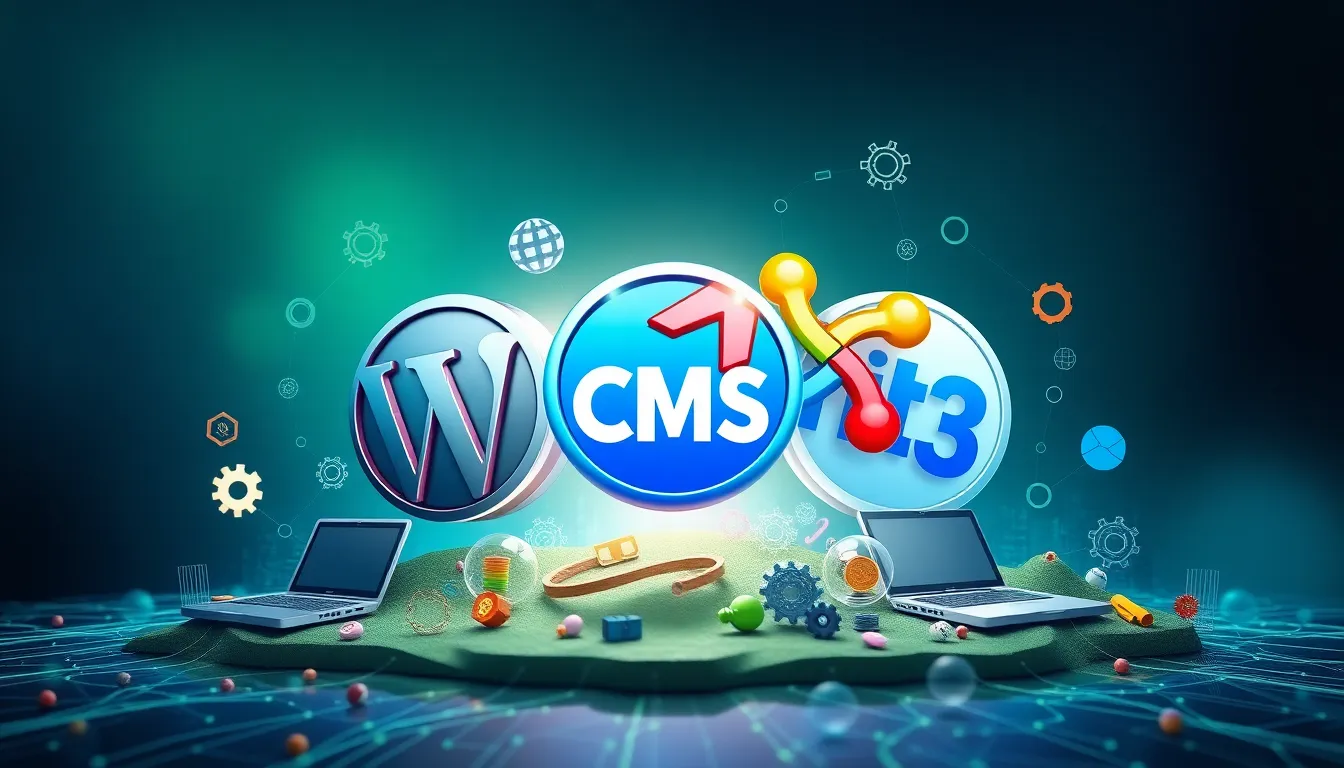
Direct comparison of selected functions
The differences between WordPress, Joomla and Typo3 can be clearly seen in the comparison of key features:
| Criterion | WordPress | Joomla | Typo3 |
|---|---|---|---|
| User friendliness | Very high | Medium | Medium |
| Flexibility | High | High | Very high |
| Security | Medium | High | Very high |
| Extensions | Diverse | Less than WP | Manageable |
| Scalability | Medium | Medium | Very high |
Charging times & performance in everyday life
Fast loading times increase user satisfaction and boost search engine rankings. WordPress achieves stable loading times with a suitable caching plugin, but gets into trouble with several hundred subpages. Joomla performs solidly - especially with a structured content structure. Typo3 stands out in this respect: once correctly configured, the CMS allows short loading times even with extensive databases.
Nevertheless, the server configuration plays a decisive role for all three systems. Modern PHP versions, an SSD basis and a CDN help to get the most out of WordPress' loading time potential.
In addition to pure caching, themes or templates and their code quality also play a major role. A confusing, outdated template will noticeably slow down any system. I therefore always recommend using lean themes and paying attention to a proper code structure. If website operators use a lot of third-party scripts, for example, loading times can quickly increase, especially on WordPress sites. Joomla and Typo3 allow strictly modular integration, which can often better control the loading of external resources. Ultimately, however, it is the combination of system setup and hosting performance that determines whether a website loads quickly or not.

Safety and maintenance in comparison
Anyone who manages sensitive data or has to work in compliance with the GDPR should rely on a CMS system with a high level of security. Typo3 places the strongest focus here. Regular updates, transparent security patches and strict user management make it particularly trustworthy.
Joomla also enjoys a good reputation when it comes to security. WordPress offers solid basic security, but requires regular maintenance from me as the operator. Outdated plugins harbor risks - I recommend automatic security plugins such as Wordfence.
An additional aspect that is becoming increasingly important is two-factor authentication (2FA). WordPress supports it through plugins, whereas Joomla and Typo3 offer some built-in or easily extendable solutions. It pays to secure access with 2FA to make brute force attacks more difficult. It can also be useful to configure IP restrictions for the backend or carry out regular security scans. A good security concept is not only based on the CMS: the server configuration and hosting environment also play an important role. Dangerous malicious code can often be blocked at host level before it even reaches the CMS installation.
Multilingualism and international projects
For multilingual websites, I have had the best experience with Joomla. It offers native integration, whereas with WordPress you have to resort to external plugins - such as WPML or Polylang. Typo3 also masters multilingualism natively, but with a technically more demanding setup. Joomla and Typo3 are therefore often better prepared for professional, international websites.
It is also interesting that Joomla provides "out of the box" functions that standardize language files. This means that you don't have to laboriously retrofit a plugin or module for each language pack. Especially for projects with more than two languages, a good organization of the content structure is essential. In complex Typo3 installations, you can create extensive language trees and even define different start pages for each country. For example, corporate websites can be operated at a global level, while each branch only has to maintain or expand its own section. Important to know: This increases the complexity of Typo3 even further - so you should clarify in advance how large the international project will be and whether the effort will be worthwhile in the long term.
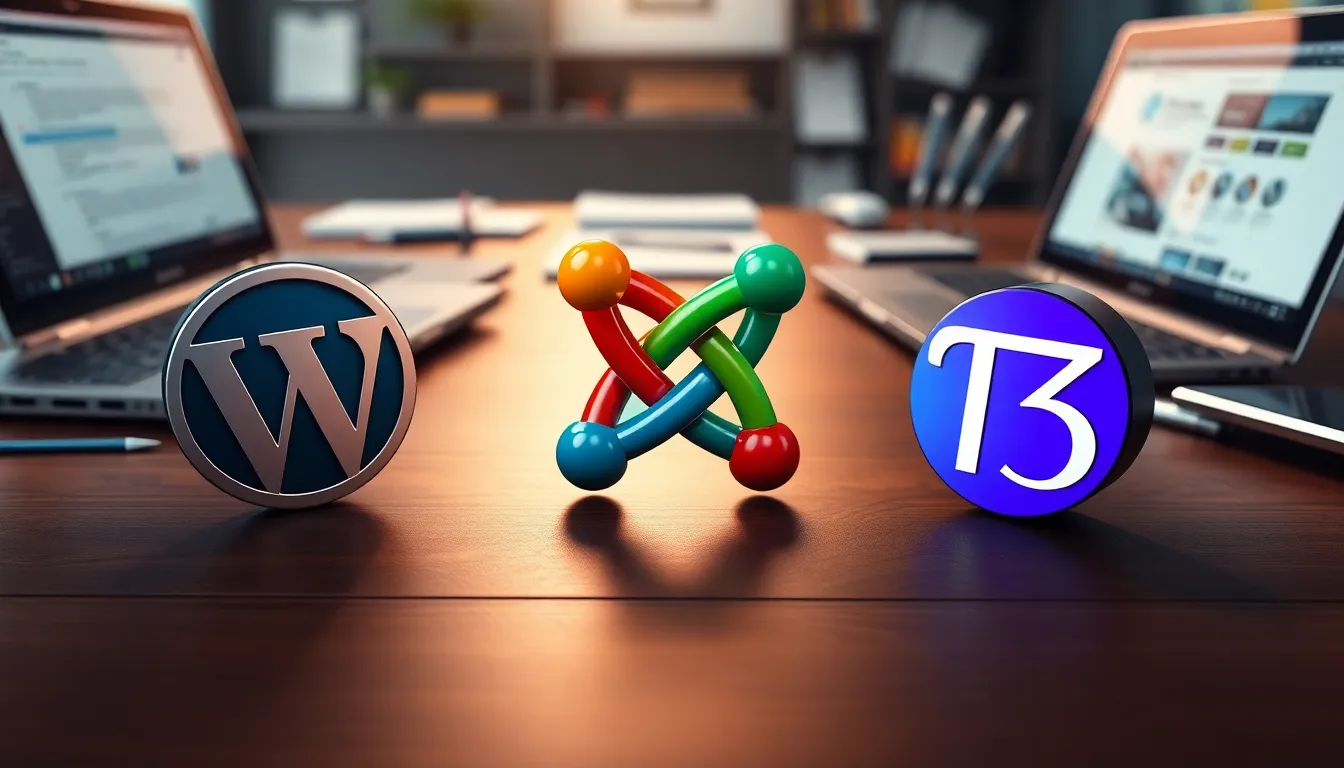
Extensible themes and design options
Choosing the right theme or template is a key question for the overall impression of the website. WordPress offers a huge range of free and premium themes that can be installed very quickly. This makes it easy for beginners in particular to get a professional layout within a very short time. Thanks to the theme customizer in WordPress, you can then adjust the color, logo and basic layout details quite intuitively.
With Joomla and Typo3, there is less talk of "themes", but the basic principle is similar: here too, the design template determines how the content ultimately looks in the frontend. Joomla offers a selection of templates, some of which are free and some of which are chargeable. However, the market is much smaller than with WordPress, which can make it more difficult to find exactly the right design. Typo3, on the other hand, is very often implemented completely individually: Those who opt for their own layout here usually work with agencies or developers who customize the template down to the last detail. This is more time-consuming, but allows literally limitless design freedom - including very specific corporate design specifications.
In summary, it can be said that simple themes can be used with WordPress in a matter of seconds, while Joomla and Typo3 can be used with ready-made templates, but often require more effort in tweaks and detailed adjustments. For particularly sophisticated corporate websites that have to follow strict branding and layout specifications, however, it is worth developing your own template with Joomla or Typo3.

SEO potential and search engine optimization
When it comes to SEO (Search Engine Optimization), all three systems have their strengths. WordPress shines with plugins such as Yoast SEO or Rank Math, which make it easy for beginners to prepare texts in a search engine-friendly way thanks to the traffic light system and live analyses. Joomla comes with some SEO functions as standard, such as speaking URLs and meta data management, which can be activated quickly. Typo3 also offers sophisticated options for maintaining meta data, setting up redirects or using canonical tags - however, experience has shown that these options require more technical know-how during the initial setup.
However, the strength of a good SEO strategy is not just the CMS itself, but the optimization practice behind it. If you structure your content and focus on relevant keywords, you will be able to achieve good rankings in each of the three systems. The advantage of WordPress is the large selection of tutorials and plugins that make it easier to get started. Joomla users benefit from a comparatively clear structure, while Typo3 users benefit above all from technical stability and the possibility of complex URL structures. If you are planning multi-level category structures with thousands of articles, for example, Typo3 is in no way inferior in terms of SEO potential - provided the setup is correct and the data is entered correctly.
Upgrades and migration
Sooner or later, upgrades are due, be it from an old to a new CMS version or even a switch between systems. WordPress upgrades are usually relatively straightforward, as long as themes and plugins remain compatible. With Joomla, there are regular update paths from one major version to the next, which usually works smoothly as long as you pay attention to official documentation. Typo3 pursues an LTS strategy (Long Term Support), which means that there is predictable and long-term version support. A mature project that runs with a stable LTS version can be operated for several years without a major version change.
Migration tools and scripts can help with a system change, for example from Joomla to WordPress or from WordPress to Typo3. However, experience has shown that manual effort is always required here, especially if complex data structures, user rights or individual plugins are involved. Careful pre-analysis of the current installation, a test run in a staging environment and consideration of database structures are essential to ensure that nothing is lost. It is therefore advisable to consider how changeable the CMS should be at the start of the project and what potential additional work could arise from a later changeover.
Decision support for the right CMS system
The right choice depends heavily on the intended use. If you are focusing on user-friendliness and speed during setup, the WordPress the tool of your choice. For structured presentations with an international focus, I consider Joomla is the better option. If, on the other hand, you want to manage large projects sustainably Typo3 particularly well - even if this requires a higher technical entry level.
I often recommend that small companies start with WordPress. For medium-sized companies with international target groups, on the other hand, I recommend Joomla, and for corporate solutions there is hardly any way around Typo3.
At the same time, you should always keep an eye on whether the CMS will still meet your requirements in five years' time. A small blog or a corporate presence can grow wonderfully with WordPress, as long as you pay attention to sufficient performance optimizations. However, if you are sure that hundreds or even thousands of content pages will be created over time and a multilingual portal is planned, Joomla and Typo3 tend to be more solid. Individual adaptability, for example with regard to data models and rights management, is an important factor, especially for demanding projects. The question of how quickly editors have to get to grips with the system also plays a major role in practice. Every extra click can cause frustration - WordPress often scores points here with beginners, interns or guest authors, as it is usually much easier to get used to.
Concluding thoughts
Ultimately, there is no "one size fits all" CMS. The requirements for a website, internal processes and integration with other systems differ from project to project. If you need a quick start and have little prior technical knowledge, WordPress is a very good choice. Joomla is a great choice for ambitious portals that require more structure and multilingualism right from the start. And if you want to reach the enterprise level, there is hardly any way around Typo3. The important thing is to be clear about the long-term requirements. Then not only the performance will please, but also the maintenance and scalability will stay on track.

